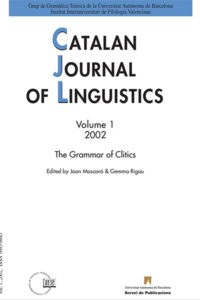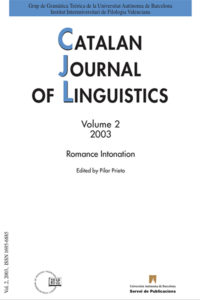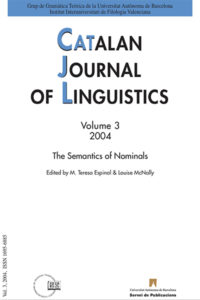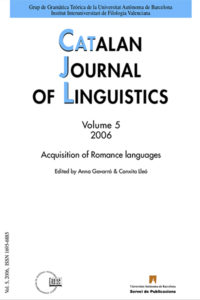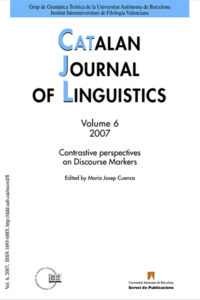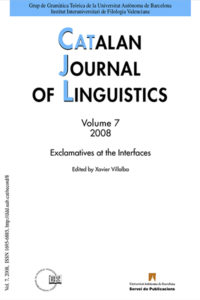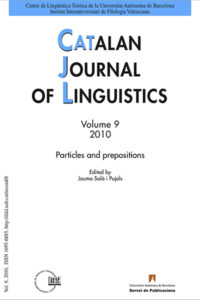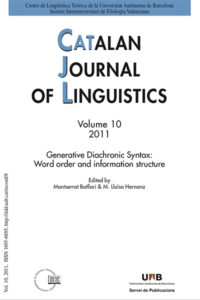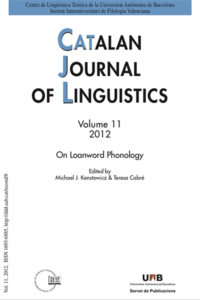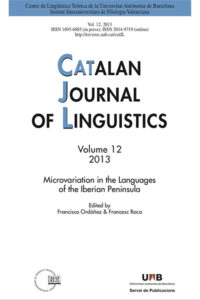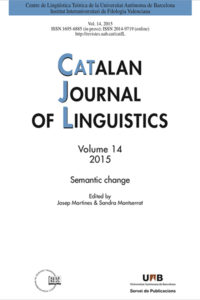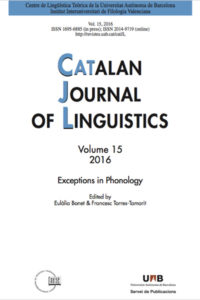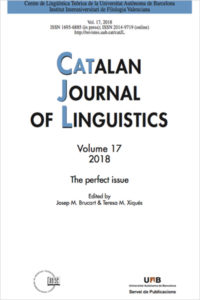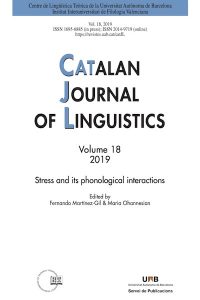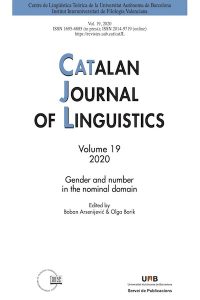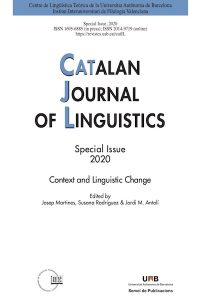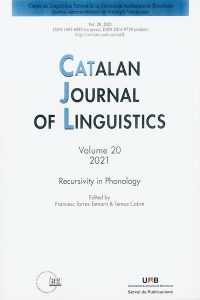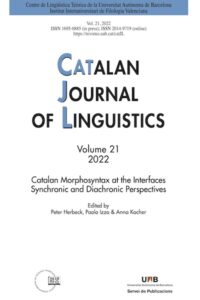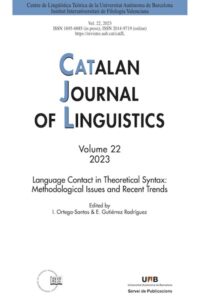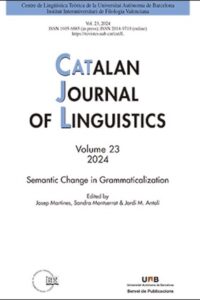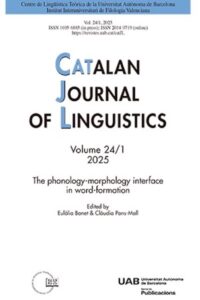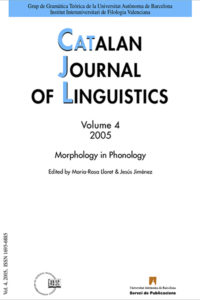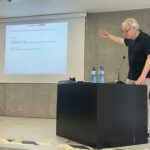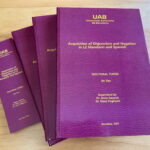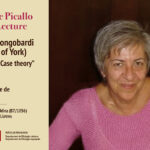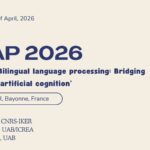25 maig, 2005
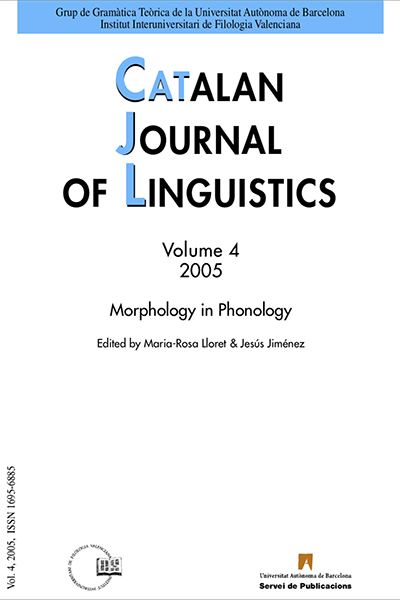
Autors:
Maria-Rosa Lloret & Jesús Jiménez (eds.)
Títol:
Morphology in phonologyEditorial: Universitat Autònoma de Barcelona, Servei de Publicacions
Col·lecció: Catalan Journal of Linguistics #04Data de publicació: 2005
Pàgines: 252 Text completThis fourth volume of Catalan Journal of Linguistics is devoted to a topic discussed at length in the literature but which nevertheless remains a challenge for any view of phonology: the morphology-phonology interaction. The papers collected address two related issues, the role of morphological information in phonology and the role of phonological information in morphology.
The contributions to this volume raise many interesting questions concerning morphophonemics from different points of view. In the articles some answers to these questions are suggested. One is the search for a more restrictive and coherent grammar to account for alternations. Another one is the existence of certain symmetries between the morphological and the prosodic/phonological level. Yet another one is the role of paradigms and subparadigms (patterns and subpatterns) in phonology and morphology. Unavoidably many other questions remain unresolved and have to be left for future research: What are the consequences of Freedom of Analysis and of Richness of the Base in OT? How can we integrate and limit paradigms and subparadigms in a particular linguistic analysis? Hopefully, this volume sets out further paths to explore.
Títols de la col·lecció / Also in this series:
7 novembre, 2025
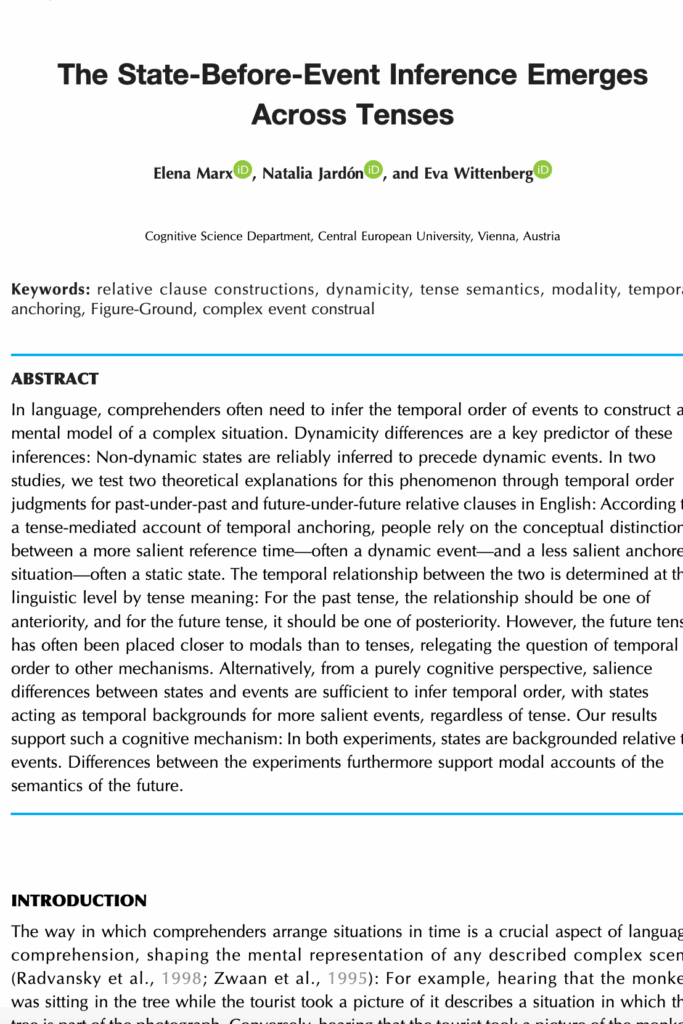
Autors:
Natalia Jardón Pérez, Elena Marx & Eva Wittenberg
Títol:
The State-Before-Event Inference Emerges Across TensesEditorial: Open Mind
Col·lecció: Open MindData de publicació: 23 de maig de 2025
Text complet
Abstract
In language, comprehenders often need to infer the temporal order of events to construct a mental model of a complex situation. Dynamicity differences are a key predictor of these inferences: Non-dynamic states are reliably inferred to precede dynamic events. In two studies, we test two theoretical explanations for this phenomenon through temporal order judgments for past-under-past and future-under-future relative clauses in English: According to a tense-mediated account of temporal anchoring, people rely on the conceptual distinction between a more salient reference time—often a dynamic event—and a less salient anchored situation—often a static state. The temporal relationship between the two is determined at the linguistic level by tense meaning: For the past tense, the relationship should be one of anteriority, and for the future tense, it should be one of posteriority. However, the future tense has often been placed closer to modals than to tenses, relegating the question of temporal order to other mechanisms. Alternatively, from a purely cognitive perspective, salience differences between states and events are sufficient to infer temporal order, with states acting as temporal backgrounds for more salient events, regardless of tense. Our results support such a cognitive mechanism: In both experiments, states are backgrounded relative to events. Differences between the experiments furthermore support modal accounts of the semantics of the future.
29 setembre, 2025
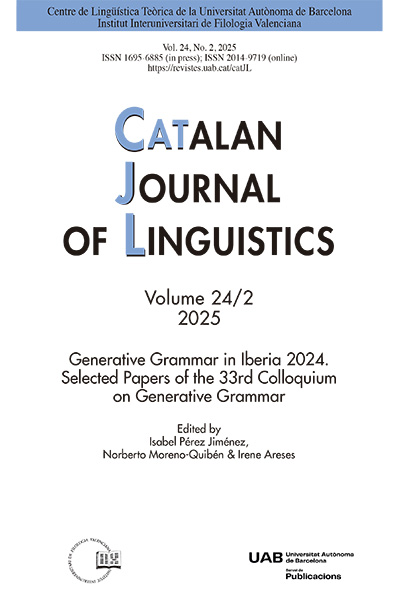
Autors:
Isabel Pérez Jiménez, Norberto Moreno-Quibén & Irene Areses (eds.)
Títol:
Generative Grammar in Iberia 2024. Selected Papers of the 33rd Colloquium on Generative GrammarEditorial: Universitat Autònoma de Barcelona, Servei de Publicacions
Col·lecció: Catalan Journal of LinguisticsData de publicació: 2025
Pàgines: 244 Més informacióTítols de la col·lecció / Also in this series:
28 febrer, 2025
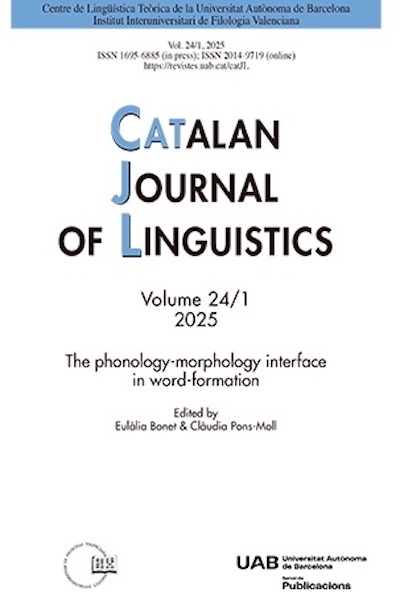
Autors:
E. Bonet & C. Pons-Moll
Títol:
The phonology-morphology interface in word-formationEditorial: Bellaterra: Servei de Publicacions de la UAB
Col·lecció: Catalan Journal of Linguistics #2025Data de publicació: 2025
Pàgines: 325 Més informació
Text completThis issue of Catalan Journal of Linguistics contains a selection of nine contribu-tions that were presented at the workshop “Nominal inflection and word-formation at the phonology-morphology interface” (NoWPhoMo), which took place in early 2024 at the Universitat de Barcelona (January 25) and at the Universitat Autònoma de Barcelona (January 26), as part of the coordinated research project Native and non-native phonology: Language contact effects and interaction with other com-ponents of grammar, PID2020-113971GB-C21 and PID2020-113971GB-C22. The edition of the volume was handled by project PID2020-113971GB-C22.
Títols de la col·lecció / Also in this series:
28 octubre, 2024

Autors:
J. Martines Peres, S. Montserrat Buendia & J. M. Antolí Martínez (eds.)
Títol:
Semantic Change in GrammaticalizationEditorial: Universitat Autònoma de Barcelona, Servei de Publicacions
Col·lecció: Catalan Journal of Linguistics #2024Data de publicació: 2024
Pàgines: 324 Més informacióIn recent decades, diachronic semantics as a discipline has undergone a revolu-tion. Firstly, because the very concept of meaning has been broadened: whereas traditionally diachronic semantics focused on the study of lexicon, it is now agreed that not only the lexicon is a bearer of meaning, but also morphemes, phraseologi-cal units or grammatical constructions contain a semantic load. Consequently, this expansion of the field of study has been accompanied by a re-evaluation of the dis-cipline: diachronic semantics has gone from being on the periphery of the study of linguistic change to being considered a core subject. The importance that semantic change has acquired in the study of grammaticalization is paradigmatic of all this: Semantics and Pragmatics have become fundamental disciplines for explaining the origin of grammatical change and the context in which it occurs.
At first, studies on grammaticalization (see, for example, Lehmann 1995) focused on the description of the criteria defining the change and the semantic, morphosyntactic and phonological patterns involved. In these early studies, the role given to semantic change was minor, and it was mainly observed that gram-maticalization entailed a loss of meaning (semantic bleaching) between the source units and the grammaticalized units.
In a second stage, studies such as those by Traugott (1989, 2010, among oth-ers), Traugott & König (1991), Hopper & Traugott (1993) or Traugott & Dasher (2002) placed semantics and pragmatics at the center of interest. Along with the semantic bleaching associated with grammaticalization processes, it was pointed out how grammaticalization also entails the encoding of pragmatic values in the new grammaticalized units that the source units did not possess.
Moreover, cognitivist and, more generally, usage-based approaches have offered new answers to a fundamental question about the process of grammati-calization: Why does change occur? Along with the well-known formal reasons (such as the power of analogy), in recent decades the importance of the discursive context in the initiation of these phenomena of change has been emphasized. To this end, the pragmatic analysis of concrete communicative contexts and the application of concepts such as bridging context and invited inference, which E. C. Traugott integrates in the Invited Inferencing Theory of Semantic Change (IITSC), are fun-damental. Grammaticalization, according to this theoretical framework, originates when the encoded meaning is enriched with pragmatic values that arise from con-crete communicative contexts as a result of invited inferences. The conventionaliza-tion of these new values, with the formal changes that this entails, opens the way to grammaticalization.
Within this context, this special issue explores the place of semantic change in grammaticalization and studies cases of grammatical change with a focus on semantic change. In this sense, a selection of studies is offered that combine works with a greater theoretical weight, which a) analyze the development of the concept of grammaticalization and the place attributed to semantic change, b) deal with the correlation between semantic change and other aspects of linguistic change (syntax, morphology, phonology) and c) analyze the intersection between grammaticalization and other patterns in linguistic change (phraseologization, constructionalization). These works of a theoretical nature are combined with case studies, mainly, but not only, focused on Romance languages (and specifically on Spanish and Catalan). These empirical studies are based, in all cases, on historical data from linguistic corpora or on interlinguistic comparison.
Títols de la col·lecció / Also in this series:


